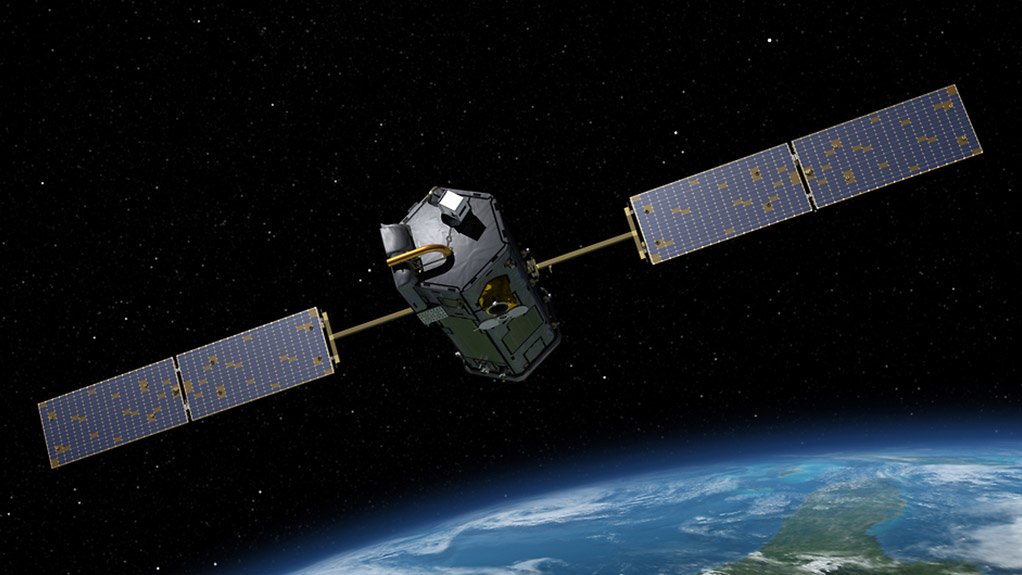SA space agency successfully supports US science satellite launch
The Space Operations division of the South African National Space Agency (Sansa) revealed on July 17 that it had supported the successful launch of the US National Aeronautics and Space Administration’s Orbiting Carbon Observatory-2 (OCO-2) satellite on July 2. The spacecraft was launched on a Delta II rocket from Vandenberg Air Force Base in California. The support was provided by the tracking, telemetry and command ground station at Space Operations’ Hartebeesthoek facility (known as HBK for short), west of Pretoria.
“For the station to qualify or be eligible to conduct any support, we conduct a number of tests including the establishment of a Satcom [satellite communications] uplink to send simulator telemetry and video imagery to Vandenberg mission control,” explained Sansa Space Operations international business manager Tiaan Strydom. “HBK is the only station in the southern hemisphere with this type of capability and there is no room for error.”
Sansa Space Operations was actually acting on behalf of the United Launch Alliance (ULA), the US company responsible for launching the satellite. ULA is a 50:50 joint venture between Boeing and Lockheed Martin and produces the famed Atlas and Delta rockets which, together, have launched some 1 300 space missions over more than 50 years.
The Delta II rocket carrying OCO-2 was launched from Vandenberg at 1156 Central African Time (CAT) and its signal was acquired by HBK at 1245 CAT. “Our coverage included the second stage burn-2 and live video footage of the spacecraft separation,” reported Sansa Space Operations operations manager Yunus Bhayat. (Burn-2 means the second burn, or firing of, in this case, the second stage’s rocket motor.)
The second stage burn-2 involved the ignition of the launch vehicle’s second engine, which pushed OCO-2 into its insertion orbit. A short time later, a video camera located on a strut on the second stage, and positioned to look forward, was switched on to observe the separation of the satellite from the Delta II second stage. The total time taken by the second stage burn-2 and the streaming of the live video of the separation was 11 minutes.
“Sansa’s exclusive location and technical exper- tise put us in a position to monitor these key events, as they take place over the African airspace,” highlighted Bhayat. “Telemetry received from the craft included high quality video footage which was sent to ULA. We employ multiple redundancies in the form of antennas and sub-systems to minimise the risk of failure.”
“The events that take place after launch are crucial to the housekeeping of satellites and to make sure that they are on track in terms of their specific flight trajectories and functionalities in space,” pointed out Strydom. “If these events are not monitored, they could be catastrophic.”
OCO-2 is designed to provide precise measurements of carbon dioxide in the atmos- phere. Its payload is effectively a single experi-ment, with three high resolution grating spectrometers to gather the required data. This data will then be compared with equivalent data gathered by ground stations and aircraft. The spacecraft has a planned operational life of two years.
For the 2014/15 financial year, Sansa has been allocated a budget of R118-million. In her budget speech in Parliament on July 22, Science and Technology Minister Naledi Pandor noted that the agency “provides valuable earth observation data to enable informed decisions by government departments and public entities. Sansa continues to provide state-of-the-art ground-station services to many globally recognised space missions.”
Comments
Press Office
Announcements
What's On
Subscribe to improve your user experience...
Option 1 (equivalent of R125 a month):
Receive a weekly copy of Creamer Media's Engineering News & Mining Weekly magazine
(print copy for those in South Africa and e-magazine for those outside of South Africa)
Receive daily email newsletters
Access to full search results
Access archive of magazine back copies
Access to Projects in Progress
Access to ONE Research Report of your choice in PDF format
Option 2 (equivalent of R375 a month):
All benefits from Option 1
PLUS
Access to Creamer Media's Research Channel Africa for ALL Research Reports, in PDF format, on various industrial and mining sectors
including Electricity; Water; Energy Transition; Hydrogen; Roads, Rail and Ports; Coal; Gold; Platinum; Battery Metals; etc.
Already a subscriber?
Forgotten your password?
Receive weekly copy of Creamer Media's Engineering News & Mining Weekly magazine (print copy for those in South Africa and e-magazine for those outside of South Africa)
➕
Recieve daily email newsletters
➕
Access to full search results
➕
Access archive of magazine back copies
➕
Access to Projects in Progress
➕
Access to ONE Research Report of your choice in PDF format
RESEARCH CHANNEL AFRICA
R4500 (equivalent of R375 a month)
SUBSCRIBEAll benefits from Option 1
➕
Access to Creamer Media's Research Channel Africa for ALL Research Reports on various industrial and mining sectors, in PDF format, including on:
Electricity
➕
Water
➕
Energy Transition
➕
Hydrogen
➕
Roads, Rail and Ports
➕
Coal
➕
Gold
➕
Platinum
➕
Battery Metals
➕
etc.
Receive all benefits from Option 1 or Option 2 delivered to numerous people at your company
➕
Multiple User names and Passwords for simultaneous log-ins
➕
Intranet integration access to all in your organisation





















